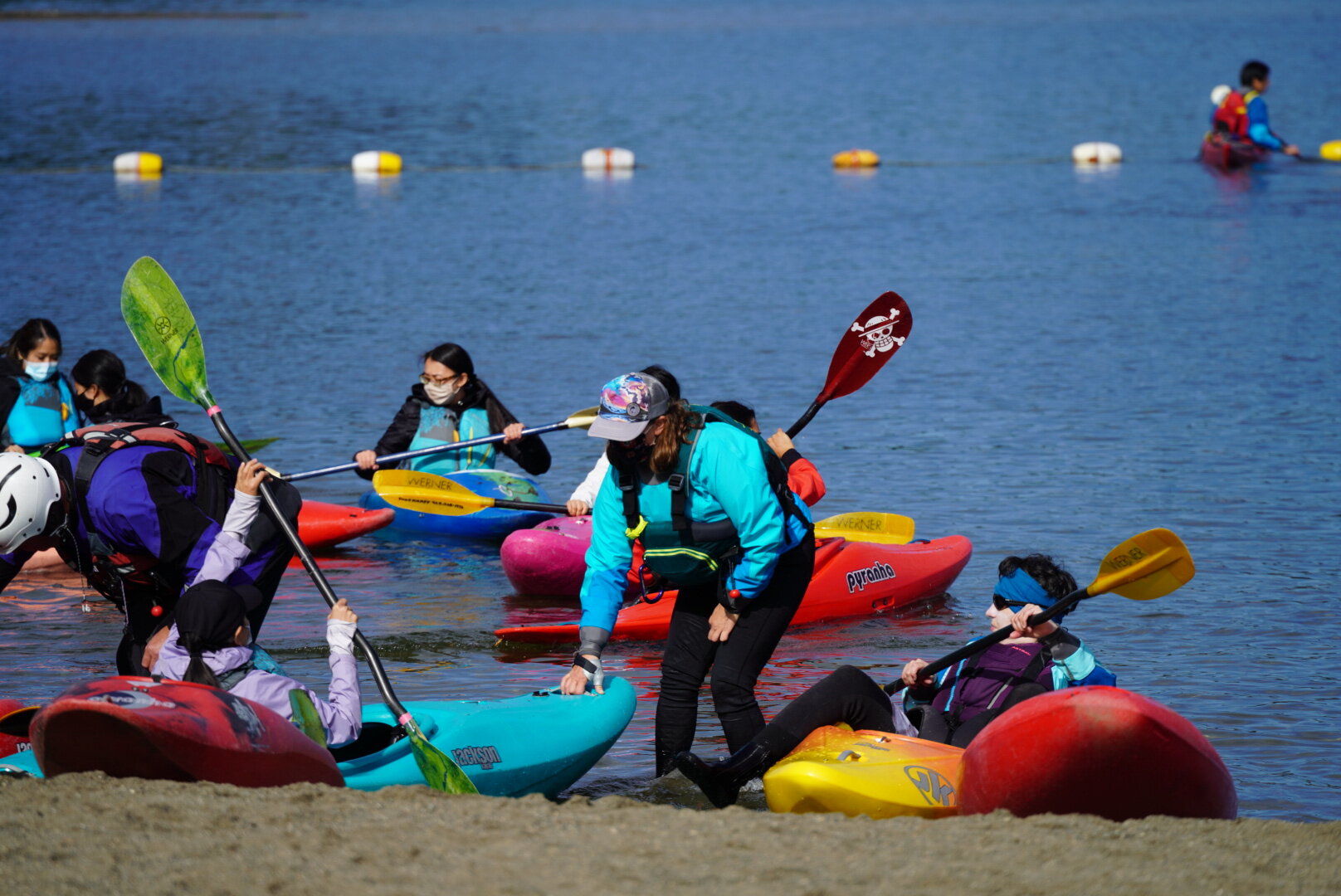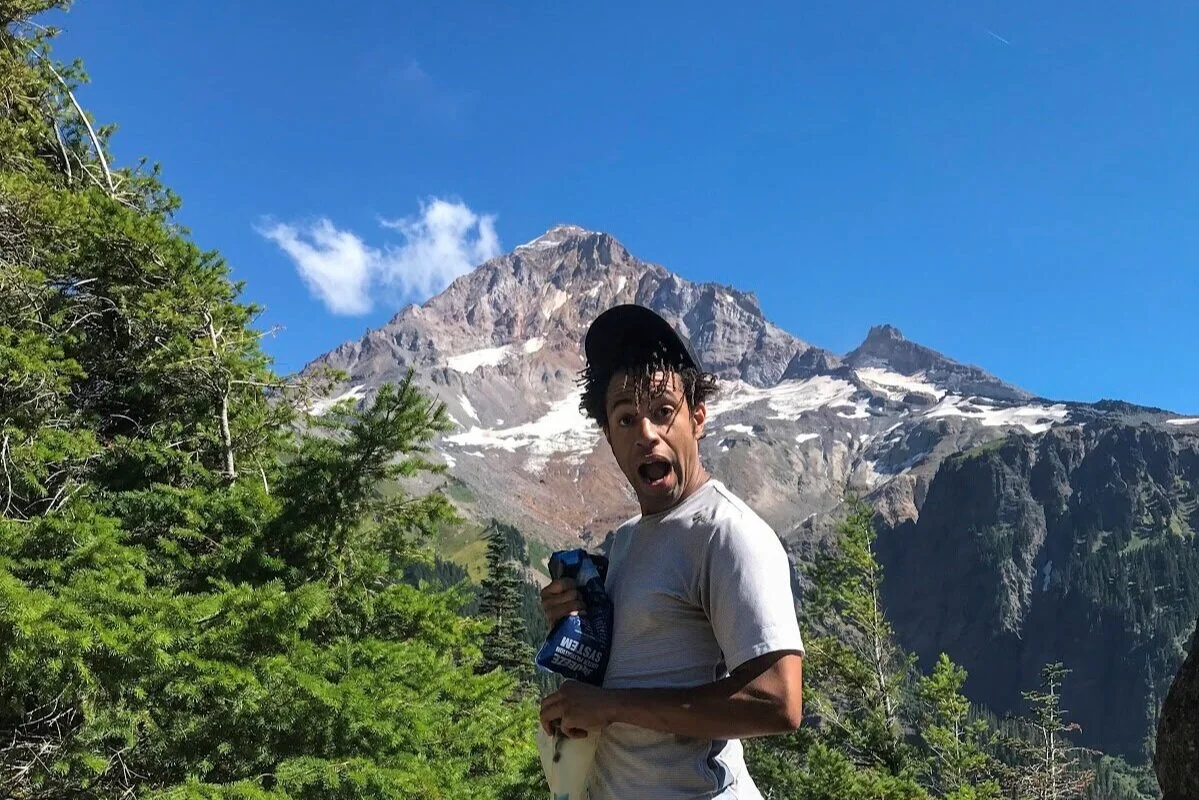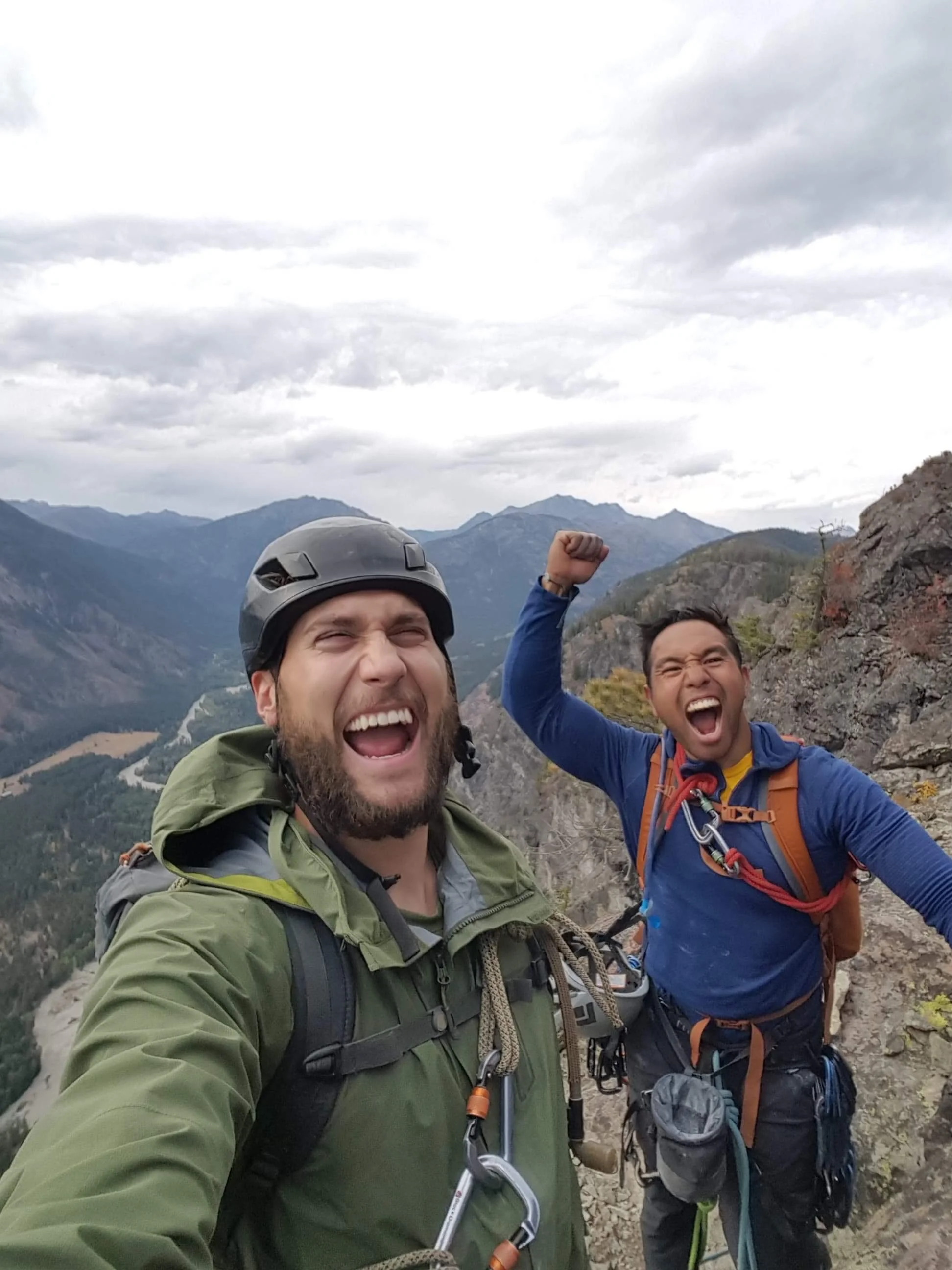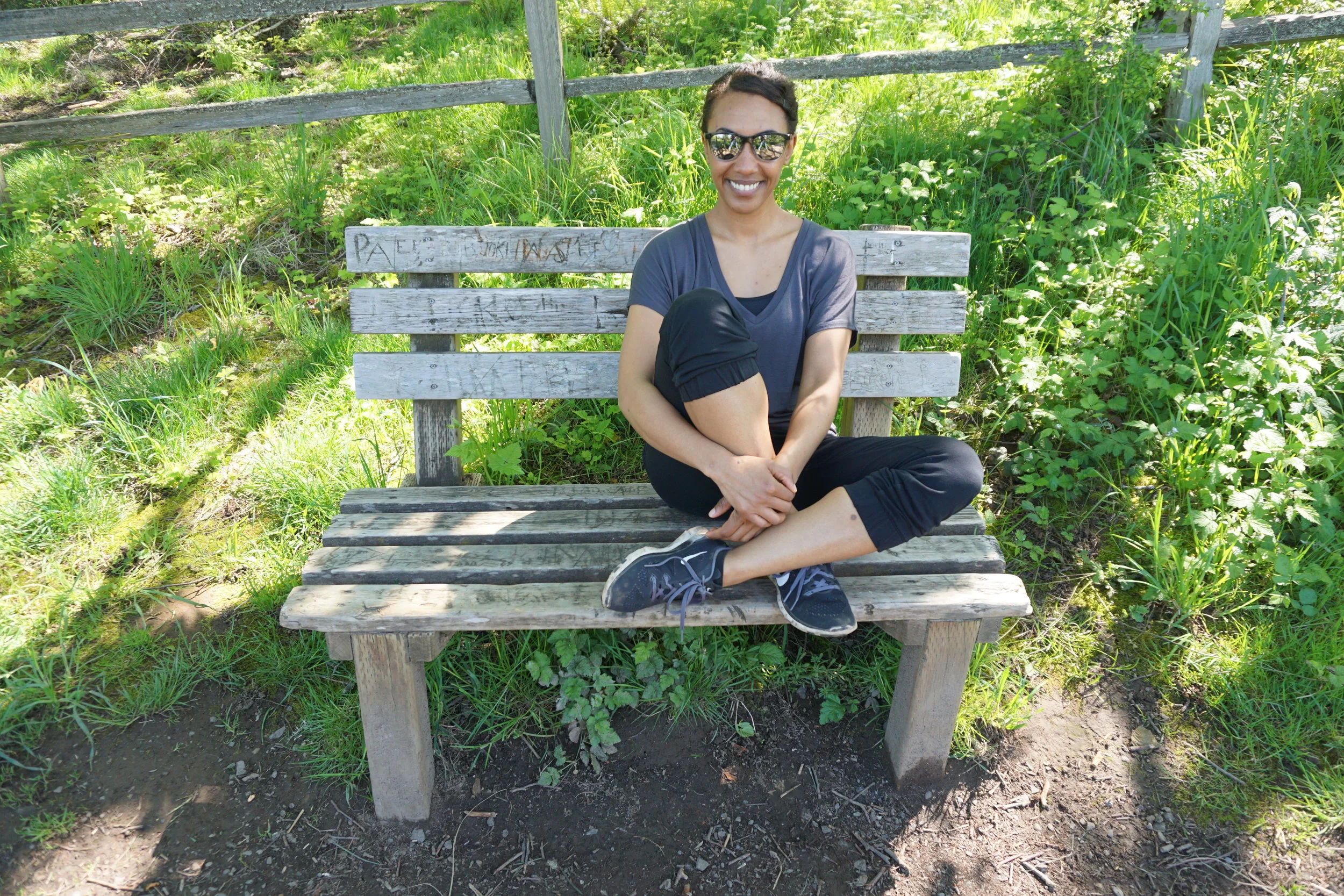4 Easy Ways to Build a More Accessible Outdoors
Participants in whitewater kayaks and rafts enjoy a paddling event at Tibbets Beach, Washington. Photo credit: Adam Edwards
We often talk about how the cost of entry into many outdoor sports is prohibitive. Whether that cost is financial or emotional, it can cause many individuals to write off an activity as not for them without ever having the chance to experience it. I’ve been thinking a lot about the cost of entry lately and how I can help provide reasonable access for Black, Indigenous and People of Color (BIPOC) to try outdoor activities.
This past summer I was able to assist in coordinating two BIPOC-focused paddling events in Oregon and Washington alongside Carla Danley and Jim Good—two local paddlers who are committed to providing opportunities for BIPOC to become part of the paddling community. We spent several months working with Diversify Whitewater, Portland Metro and Issaquah Washington's Parks and Rec department to plan our events.
Holding an event during the current shift from heavy pandemic regulations to the current state we are in now was definitely challenging. Navigating evolving state and local mandates as well as personal comfort levels without compromising safety for at-risk groups took effort and flexibility. With the help of our community members and with support from organizations like Diversify Whitewater, i -Urban teens and American Whitewater, we were able to successfully host two events.
The paddling community in the Northwest has a lot of individuals who are willing to donate their time, knowledge and gear to facilitate events for the general public. We were also able to get substantial support from local and national outdoor industry members like Next Adventure Paddle Sports Center, Issaquah Paddle Sports, Immersion Research, Dagger Kayaks, Liquid logic, Trailbutter and more.
An instructor helps a participant enter the water during a kayaking class at Tibbets Beach, Washington on Coast Salish and Duwamish land. Photo credit: Adam Edwards
Witnessing the outpouring of support from a community of which I have been a member for more than a decade was amazing. Participating in gear heavy or highly technical sports is daunting for most beginners and events like these are one of the few ways folks can focus on having a positive first-time experience versus spending a lot of money. The feedback I received was really encouraging. A lot of our first-timers talked about how great it was to have a chance to try different paddle sports in a safe and comfortable location and for FREE!
The instructional goal for both events was to create the best day possible for our participants. That meant simple instructions, positive feedback and support and full accommodation of participants' needs. Beyond that our drive was to make sure people had a great experience, stayed safe and learned something new. It was heartwarming to see so many People of Color enjoying quality time on the water while learning different paddle sports to include canoeing, rafting, whitewater kayaking and stand up paddle-boarding.
The experience made me reflect on why it is so important to have honest discussions about barriers that limit access to our communities, to include the financial cost of entry. Barriers can also include time and cultural differences inherent in navigating a new community while learning something new—especially if the community is not taking intentional steps to accommodate people from different backgrounds. All food for thought.
Participants and instructors share a laugh at the Oxbow Park boat launch on the Sandy River. Photo by Adam Edwards
Events like the skills and paddling days organized by Diversify Whitewater, or the events we were able to hold at Oxbow Park and Tibbets Beach, are great ways to lower the cost. However, these are just stepping stones. Planning events for a hundred people, navigating city permits, insurance, sponsors, gear acquisition and COVID is a big ask. As I've reflected on the opportunities we were able to provide and some of the feedback we received I’ve realized there are other ways to lower the cost of entry that will help diversify our community. More on that later, but first let’s talk about Cost of Entry.
Outdoor recreation isn’t cheap. And isn’t going to get any cheaper. Forking out several hundred to several thousand dollars is daunting...especially if you're not sure if you will stick with the activity. Initial costs and instruction for most adventure sports range from $1500-3000. Even more affordable activities, such as trail running, hiking and skateboarding have their own hidden costs—both cultural and financial, that can keep people from trying them.
Cost of entry is not limited to money. There are layers of privilege that are part and parcel of adventure sport communities. If you were not privileged to grow up with financial or geographic access, they can be difficult to break into. This is especially true of sports that take legacy access for granted which means, if you are determined to learn as an adult, you may find yourself in a class alongside five and six year olds who have privilege and access you never dreamed of at their age. Oftentimes, legacy sports also expect you to know unspoken rules about the community that you have no way of knowing, since you didn’t grow up participating in that activity. Or mentorship is the only way to advance, and finding a mentor, when no one else looks like you is daunting.
Cost of entry is emotional. For some, the challenge of the unknown is thrilling. For others it's the extra layer on an anxiety sandwich. Trying new things is daunting, combine that with having to spend a lot of money, meet new people (during a pandemic), learn a new language and build connections with the ‘right people’ in order to advance. It’s a lot to ask, especially of BIPOC who often are entering spaces that are not designed with their comfort in mind. This understandably leaves many people saying, “Aight, I’m gonna head out.”
Many outdoor communities are not openly welcoming. Some are hostile to different gender identities, BIPOC or LGBQTIA participants. Whether it be the community members or an overall social norm this barrier to entry cannot be ignored and is often harder to overcome than just finance.
Now that we have a small idea of what it may feel like to be an outsider or newcomer in an outdoor community, let’s talk about next steps.
A group of participants learn about paddle rafting in a yellow AIRE raft from American Whitewater representative Thomas O’Keefe. Photo by Adam Edwards
A Few Ways To Lower Cost Of Entry
Focus on the intangibles
Free and reduced cost events are great, but empathy and kindness also matter. Be available. Be present. Be kind. Operate from a position of conscious and curious sharing.
Share your knowledge, share your time. Don’t take important issues like access, time and knowledge for granted. The community will only grow if skilled and experienced members make themselves available as mentors.
If you have extra gear that is in safe and working order, donate it instead of selling it.
If you are qualified to instruct, either privately or through a company, try to provide free or low cost options to interested folks who might not otherwise have the opportunity.
Consider setting up a gear share, wherein experienced members with extra gear and an inclination to share time, knowledge or skills make themselves available for group outings. Really it's as easy as sharing some of your time and its a great way to build genuine connections.
Research organizations that provide leadership or skills courses to BIPOC and LGBTQIA individuals and donate your time, money or both.
Realistically many things are going to keep increasing in cost. That means that prices of gear will continue to go up even as wages remain stagnant for many people living in the U.S. Unaddressed structural racism also keeps social, cultural and emotional costs high for BIPOC and other historically marginalized groups. So doing what you can to help each other, to really foster the growth and pursue the change we’d like to see in our communities is going to be so important.
I for one will continue to look for ways to provide free paddling days, community connections and mentorship with the goal of making paddling sports accessible to new people. Hope to see you out there!
A group of participants and instructors listen to safety instructors at Tibbets Beach, Washington. Photo by Adam Edwards

























Having an injury forces us to come face to face with who we are outside of our sport. And sometimes, we don’t like what we see. When you’re sidelined, sitting in your room, staring at the ceiling, wondering what comes next, who are you then?
“This is a time when you’ll learn a lot about yourself,” Kim said. “Just keep going. And listen to your body.”